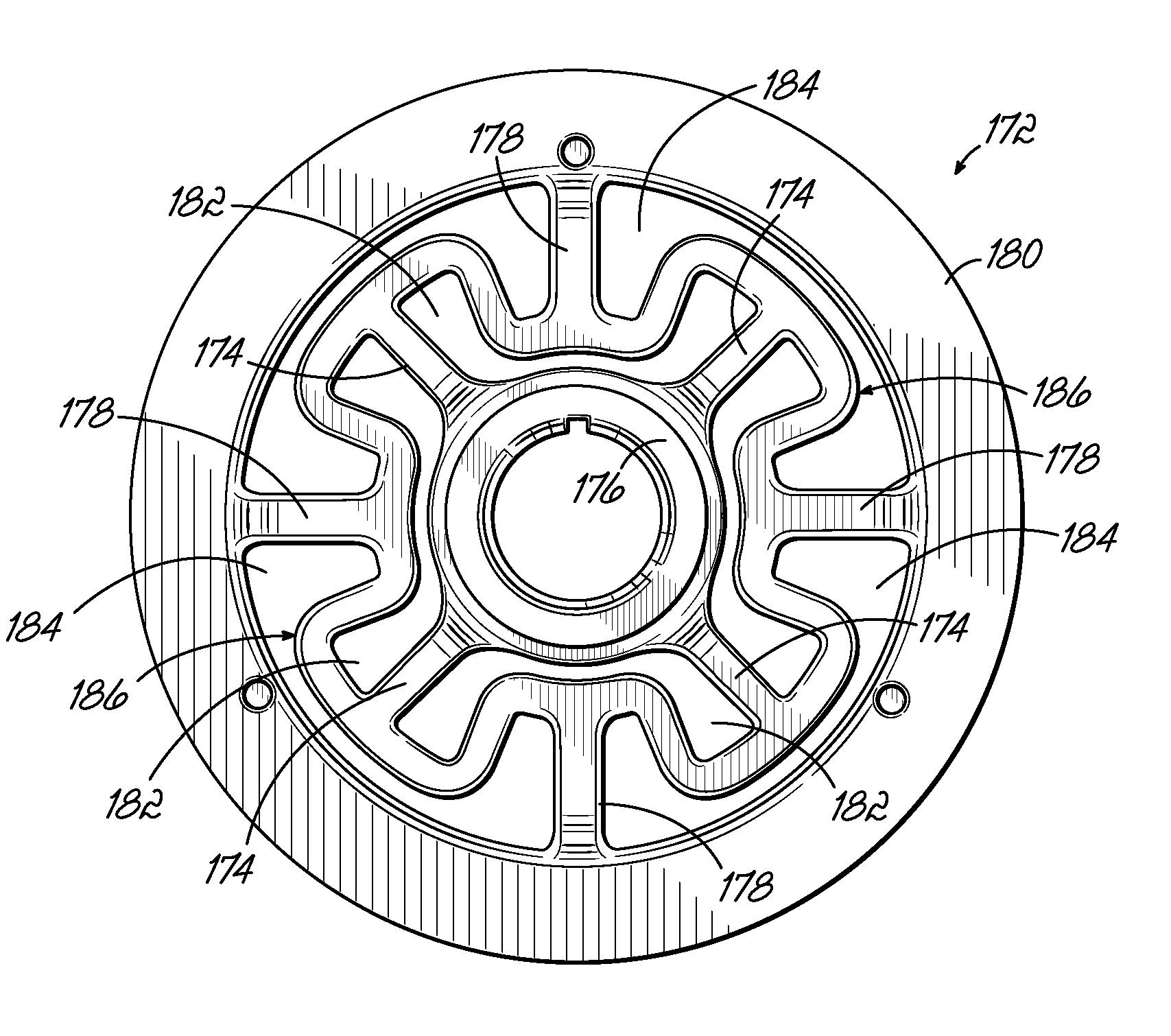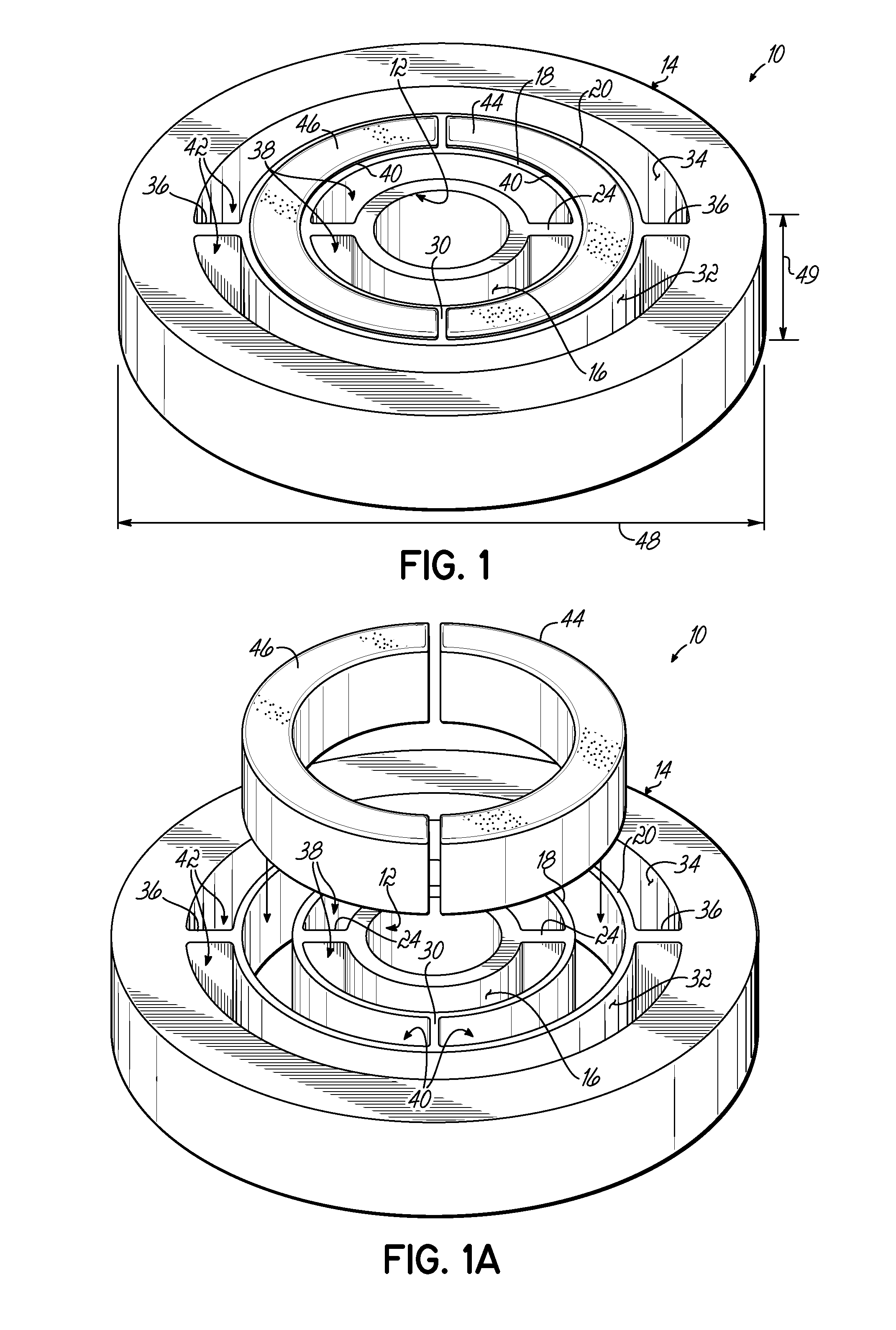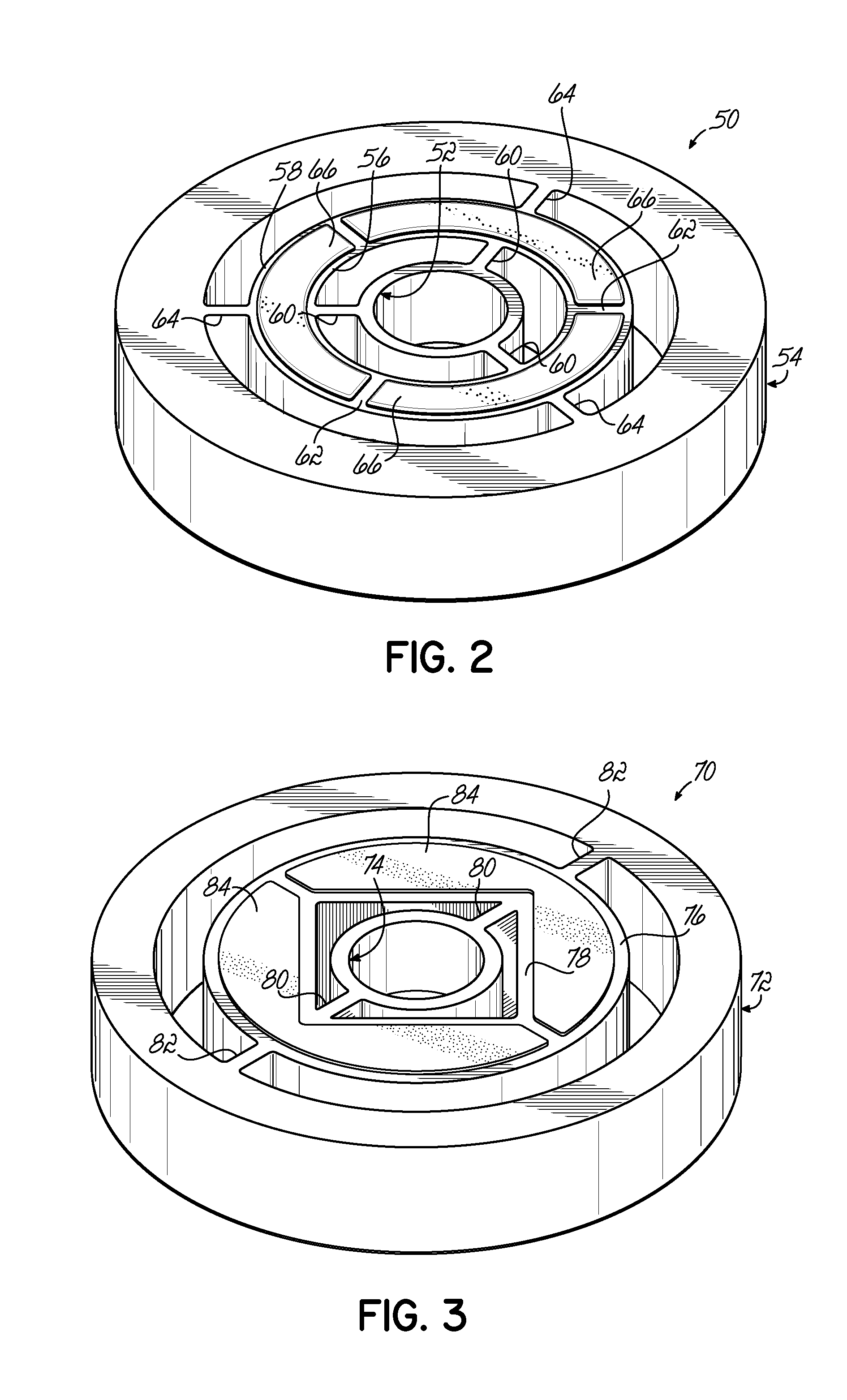Decoupled vibration damper
a damper and decoupling technology, applied in the direction of spring/damper, rotating vibration suppression, rotary machine parts, etc., can solve the problems of increasing the parasitic inertia of the system, torsional vibrations of considerable amplitude, and fatigue failure of the rotatable shaft, etc., and achieve the effect of dampening vibration
- Summary
- Abstract
- Description
- Claims
- Application Information
AI Technical Summary
Benefits of technology
Problems solved by technology
Method used
Image
Examples
Embodiment Construction
[0025]As shown in FIG. 1, the present invention is a damper 10 that includes a hub 12 and an outer annular inertia mass 14 formed integrally with the hub. Between the outer peripheral surface 16 of hub 12 and the inertia mass 14 are a first inner ring 18 and a second intermediate ring 20. The first inner ring 18 is connected to the outer surface 16 of hub 12 by first innermost spokes 24 which extend from the inner surface 22 of ring 18 to the outer surface 16 of hub 12. Extended between the outer surface 26 of ring 18 and the inner surface 28 of ring 20, are a second set of intermediate spokes 30, which connect the inner ring 18 to the intermediate ring 20. Finally, extended between the outer surface 32 of ring 20 to the inner surface 34 of inertia mass 14, are a third set of outer spokes 36. Preferably, the hub 12, inertia mass 14, as well as rings 18 and 20 and spokes 24, 30 and 36, are all integrally formed.
[0026]This structure defines innermost arcuate spaces 38 between the hub ...
PUM
 Login to View More
Login to View More Abstract
Description
Claims
Application Information
 Login to View More
Login to View More - R&D
- Intellectual Property
- Life Sciences
- Materials
- Tech Scout
- Unparalleled Data Quality
- Higher Quality Content
- 60% Fewer Hallucinations
Browse by: Latest US Patents, China's latest patents, Technical Efficacy Thesaurus, Application Domain, Technology Topic, Popular Technical Reports.
© 2025 PatSnap. All rights reserved.Legal|Privacy policy|Modern Slavery Act Transparency Statement|Sitemap|About US| Contact US: help@patsnap.com



